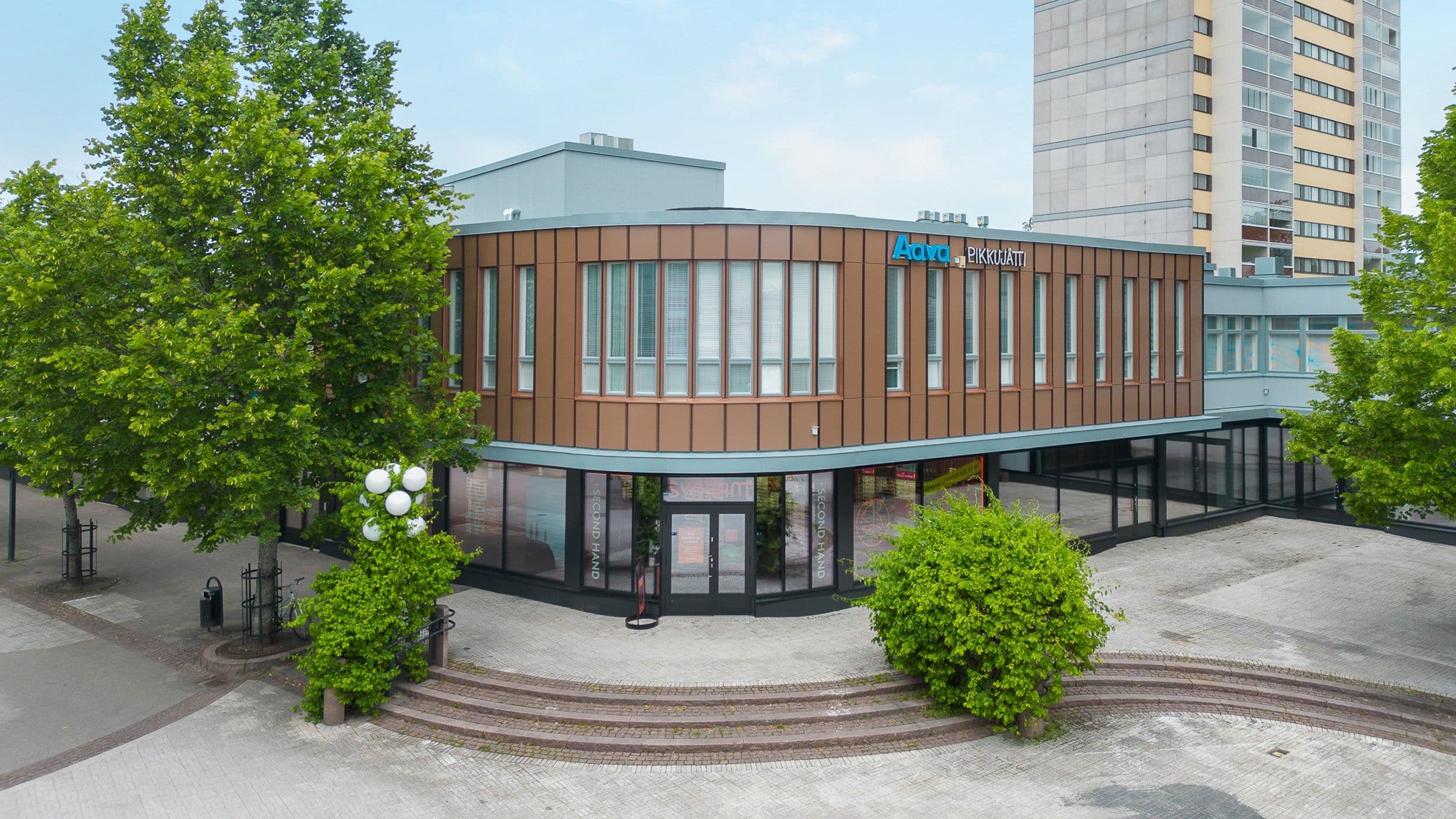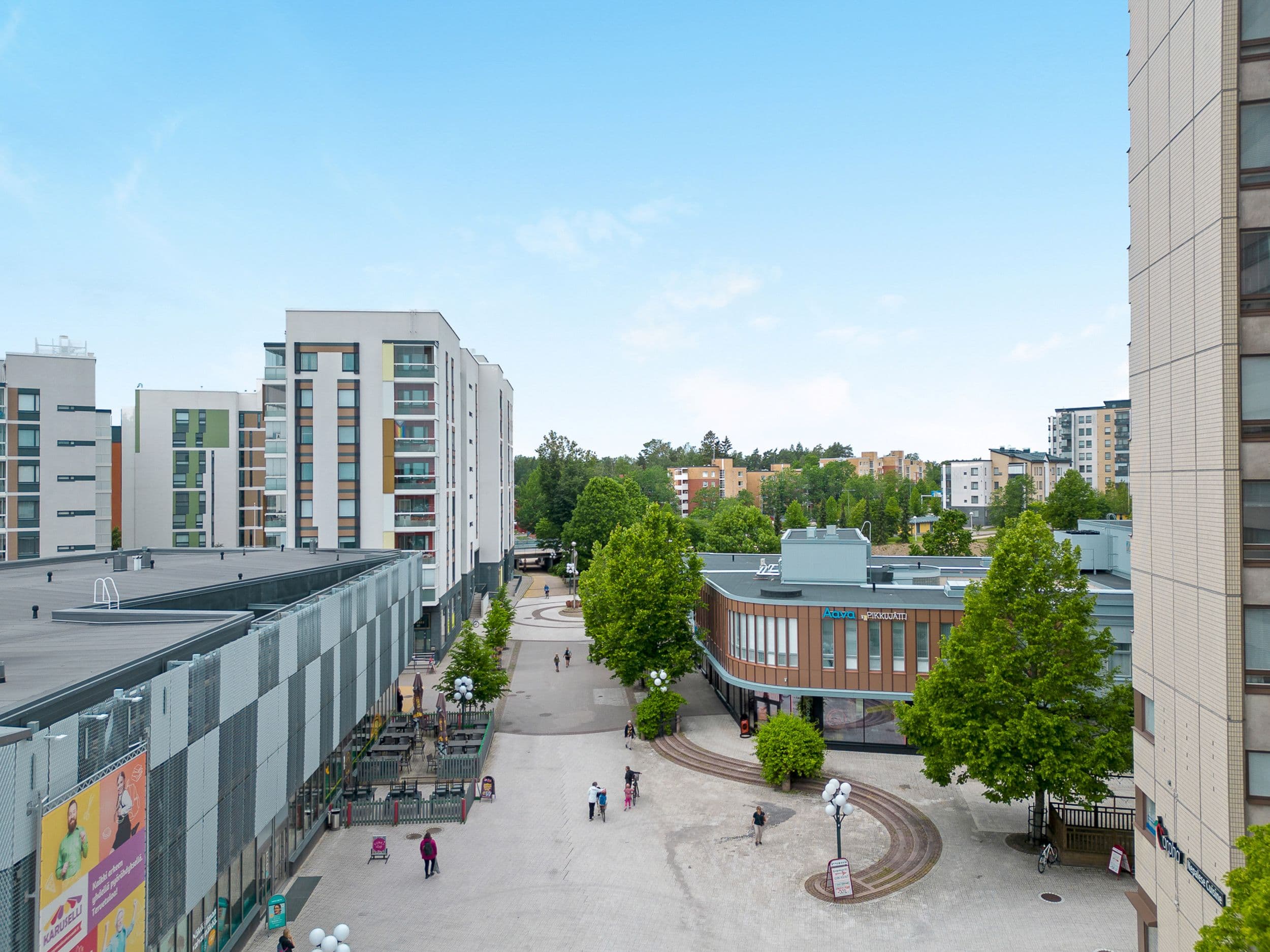Property development gives a new life to aging buildings

Back
By refurbishing aging buildings, it is possible to reduce environmental impact, improve energy efficiency, and create healthier spaces. Sustainable development also plays a significant role in the comprehensive renovation of the Kerava Kauppakaari property.
We reported earlier this spring that Kielo’s property in the heart of Kerava, Kauppakaari, is set to receive a new look and improved premises. Built in 1989, Kauppakaari has now undergone an extensive renovation, bringing significant improvements to its functionality and appearance. The project was designed and executed by SRV.
“Energy efficiency is a key factor in responsible renovation. In the Kerava Kauppakaari project, we utilize energy-efficient solutions, such as better insulation, energy-efficient windows and doors, as well as advanced heating systems,” says SRV’s project manager for renovation services, Harri Hirvonen.
By updating outdated technical systems in older, energy-consuming properties to more energy-efficient ones, energy consumption can be reduced. For example, district heating can be replaced with geothermal heating or an air-to-water heat pump.
“In addition, replacing windows brings energy savings, and even ventilation units don’t necessarily need full replacement—modernization with new fans, devices, and an upgraded automation system can suffice,” Hirvonen continues.
Prioritizing environmental responsibility, even on-site
Responsibility is important to SRV as a contractor, and the company aims to create a sustainable built environment for generations to come. In the Kerava Kauppakaari renovation project, environmental factors are considered throughout all stages of the project.
“SRV’s goal is to minimize harmful effects on the environment from its operations and to contribute to sustainable development in the built environment. Environmental responsibility guides all our activities, even when projects aren’t directly subject to EU taxonomy requirements,” Hirvonen says.
Construction sites generate various environmental impacts, such as noise, dust, emissions, and waste. The principles of sustainable construction support the management of these impacts throughout the entire construction process.
“We strive to minimize the construction site’s harmful environmental effects by using as few resources as possible without compromising quality. Mitigating and avoiding negative impacts on the surrounding environment is central to our site operations, and cooperation with waste management partners and demolition contractors advances recycling,” Hirvonen explains.
“For example, in the Kerava Kauppakaari project, most demolition wood is used for energy production. Additionally, metal, concrete, and brick are well recycled, and most of the concrete is crushed to replace natural aggregate,” Hirvonen notes.
Furthermore, the Kauppakaari contract utilizes environmentally friendly products according to the principles of responsible procurement.
“We use environmentally friendly and indoor air-safe materials whose environmental impacts are supported by reliable information. This supports both sustainable construction and healthy indoor air,” Hirvonen adds.

Renovation as an act for the climate
By implementing energy-efficient solutions, recycling demolition materials, and choosing environmentally friendly products, it is possible to significantly reduce the carbon footprint of construction and support the achievement of climate goals.
“Low-carbon solutions in the Kerava Kauppakaari project are particularly evident in low-emission energy, optimized consumption, and product choices. In the finished property, energy consumption decreases, the lifecycle is extended, and utilization rates are expected to rise,” Hirvonen summarizes.
Thanks to the comprehensive renovation of Kerava Kauppakaari, the property will serve its users better than ever—now and in the future.
More information:
Harri Hirvonen
Project Manager (Renovation Services), SRV
050 467 8851
harri.hirvonen@srv.fi
Contact us
Contact form